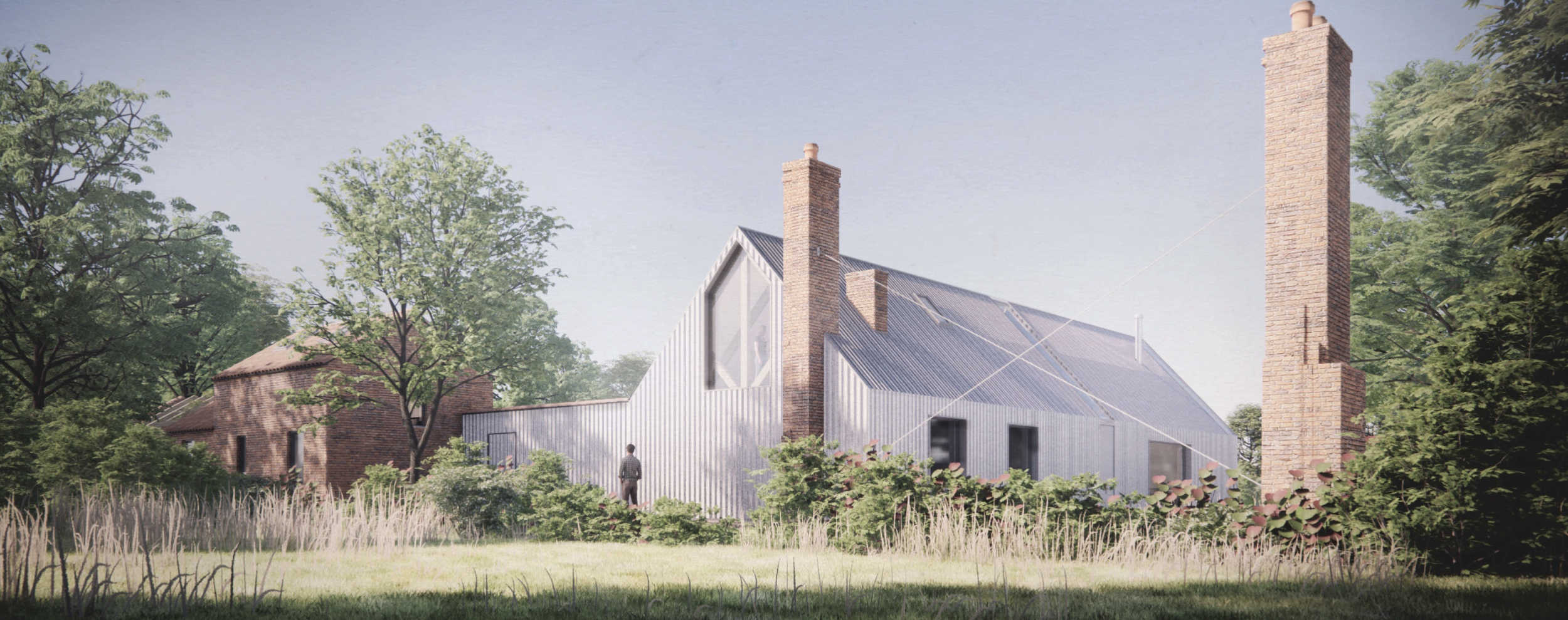DOMstudies: Derek Jarman’s Garden at Prospect Cottage
“At the back, I planted a dog rose. Then I found a curious piece of driftwood and used this, and one of the necklaces of holey stones on the wall, to stake the rose. The garden had begun.”
- Derek Jarman, Pharmacopoeia
At the edge of the Dungeness, overlooking the nuclear Power Station lies the Prospect Cottage, the small black fisherman hut, last home to the late British filmmaker and gay rights activist Derek Jarman. Painted with black tar and decorated with lines from the poem “The Sun Rising”, it’s a place that always reflected his one-of-a-kind artistic vision. Most famous perhaps is the garden, a symbol of perseverance that would be talked about for decades to come.
The site looks like you’ve landed on the Moon, nothing but shingles and small bushes for miles. No fences and no borders, just a garden that feels like it goes all the way to the horizon, becoming one with the landscape and the beautiful wilderness. Even soil cannot be found here, so nature takes the lead. Poppies and irises, silverleaf plants, ruta, and of course, sea kale, the most distinguished plant of the Dungeness that grows more here than anywhere else in the UK. The garden in front of the house is formal and quite symmetrical, bearing similarities to Jarman’s movies where symmetry plays a part in a lot of the frames. The back, however, is actually much more random, with large pieces of driftwood layered with stones and bottoms of old groins that are forming patterns on the ground. Radar reflectors from old boats and other found objects form statues that complete an ensemble of odd, yet whimsical characters in this story.
Undoubtedly, the garden became a very important place to Jarman in his later years and he’d come down here even when he was very ill. It was a form of therapy and pharmacopeia, as he called it in one of his books, and the nearer he got to death, the more important it was to him, bringing a sense of calm. His great friend and trusted companion, Keith Collins, explained that the whole idea behind The Garden was about evolution; It was a place bound to change all the time, unable to be fixed at a certain date. And it’s precisely this notion, that probably gave Jarman the opportunity to let go of control, to be present and nurture the beauty around him.
You can read about The Garden in several of Derek Jarman’s books:
Derek Jarman's Garden, 1995
Derek Jarman created his own garden in the flat, bleak expanse of shingle that faces the nuclear power station in Dungeness, Kent. A passionate gardener from childhood, he combined his painter's eye, his horticultural expertise and his ecological convictions to produce a landscape which mixed the flint, shells and driftwood of Dungeness; sculptures made from stones; the area's indigenous plants; and shrubs and flowers introduced by Jarman himself. This book, the last he ever wrote, is his own record of how this garden evolved, from its beginnings in 1985 to the day of his death in 1994. (from Goodreads)
Pharmacopoeia: A Dungeness Notebook
In 1986 artist and filmmaker, Derek Jarman, bought Prospect Cottage, a Victorian fisherman's hut on the desert sands of Dungeness. It was to be a home and refuge for Jarman throughout his HIV diagnosis, and it would provide the stage for one of his most enduring, if transitory projects - his garden. Conceived of as a 'pharmacopoeia' - an ever-evolving circle of stones, plants and flotsam sculptures all built and grown in spite of the bracing winds and arid shingle - it remains today a site of fascination and wonder.
Pharmacopoeia brings together the best of Derek Jarman's writing on nature, gardening and Prospect Cottage. Told through journal entries, poems and fragments of prose, it paints a portrait of Jarman's personal and artistic reliance on the space Dungeness offered him, and shows the cycle of the years spent there in one moving collage.
'[Derek] made of this wee house, his wooden tent pitched in the wilderness, an artwork - and out of its shingle skirts, an ingenious garden - now internationally recognised. But, first and foremost, the cottage was always a living thing, a practical toolbox for his work' Tilda Swinton, in her Foreword (from Goodreads)
Modern Nature: Journals, 1989 – 1990 (The Journals of Derek Jarman, 1)
In 1986 Derek Jarman discovered he was HIV positive and decided to make a garden at his cottage on the barren coast of Dungeness. Facing an uncertain future, he nevertheless found solace in nature, growing all manner of plants. While some perished beneath wind and sea-spray others flourished, creating brilliant, unexpected beauty in the wilderness.
Modern Nature is both a diary of the garden and a meditation by Jarman on his own life: his childhood, his time as a young gay man in the 1960s, his renowned career as an artist, writer and film-maker. It is at once a lament for a lost generation, an unabashed celebration of gay sexuality, and a devotion to all that is living. (from Goodreads)
Smiling in Slow Motion: Journals, 1991–1994 (The Journals of Derek Jarman, 2)
Part diary, part observation, part memoir, Smiling in Slow Motion concludes the journey begun in Modern Nature. These previously unpublished journals stretch from May 1991 until two weeks before the author’s death in February 1994. (from Goodreads)
Photography by Voytek Ketz













